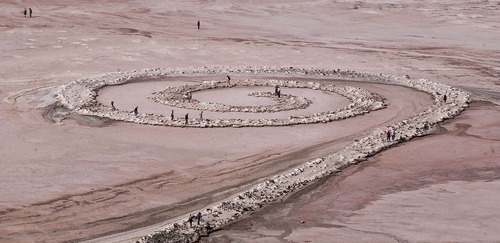Text
The Unfortunate Problem with Land Art
I want to outline this post by noting that I hope the movement for land art continues, because it’s a great and healthy direction for the art world to pursue. The problem with land art, however, is that, in my experience at least, the reason that art has centralized itself within cities, bolted to benches in parks or found in white-box museums is because many of those pieces are commissioned to be there. For example, Spiral Jetty, one of the greatest and most influential example of Land Art, was put where it is now because it was wholly the artist’s decision. For artists to be able to move their minds and their works out of the museums and into the Earth, they first need to disconnect (to an extent) from people commissioning them to do their work, which could be considered dangerous for many artists.
6 notes
·
View notes
Text
Environmentally Engaged Art and Climate Change
I like to think that I’m pretty involved in the environment, but reading this week’s articles got me thinking about environmental activism in the form of art, which is ironically something I haven’t really put much thought into. Though our colonialist is most definitely a huge part of the climate change issue today, I think it’s interesting to think about being environmentally friendly in artwork that we create rather than creating artwork exclusively related to the environment. What I mean is that as artists, many of the materials that we use can’t be disposed of regularly, or at the very least are not environmentally friendly to dispose of. As artists, we need to find a balance where we can be both creative as well as consistent in representing messages and movements that we are a part of. I think many environmentalist artists make pieces that pertain to environmental issues, but then turn their backs to create a new piece that may bring harm to that same issue. Of course, the behind the scenes work and environmental friendliness that goes into a work of art isn’t usually seen when most artists spend their time cloistered in studios, but with issues like this, the message is far less important than the actual routine itself. Artists, especially those whose work is engaged with environmental issues, should spread their use of environmentally-friendly tools beyond just their environmental pieces and on to their other works as well.
1 note
·
View note
Text
Arte Útil - Anti Eviction Mapping Project
https://www.arte-util.org/projects/anti-eviction-mapping-project/
I found this super interesting piece on the Arte Útil website, which uses data to visualize disposition and resistance among San Francisco Bay Area residents
0 notes
Photo
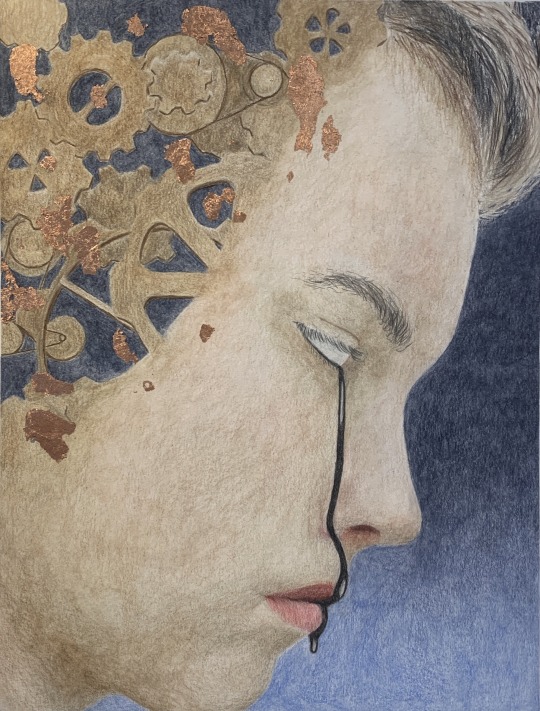
This piece had a title when I was applying to college, but looking back I think I would prefer to address it now as an untitled piece. Maybe one day I’ll find something, but I think I made this piece because words could not adequately express my frustration with mental health services at this time. This piece is probably one of my best attempts as what I now know is called Arte Útil. I created it to address my anger and bodily dissociation because of my local mental health services, and how the government mandated toxicity and impersonality those services make people feel less human than they did before seeking help, which can cause more problems.
0 notes
Text
Arte Útil - Art as a Tool for Social and Political Empowerment
Tania Bruguera’s video for this week featured a performance piece of sorts where mounted police were brought indoors and told to do their jobs in a place where they normally wouldn’t be, and because of this, to a group of people who normally wouldn’t experience it. The action taken to go to a museum and to experience art of sorts isn’t the same action as turning on the TV to take a look at the news. Much like Tania Bruguera says, when you look at the news, it’s easy to just change to the next channel. While I would say that experiencing a staged version of political issues isn’t without its flaws, it’s something that is much less escapable. Something that leaves a feeling ingrained in a person’s mind.
While my artwork tends to wind up being more tangible and physical rather than performative, I think I still want to implement Arte Útil in my work. It’s difficult for me to draw parallels between different pieces of mine and Tania Bruguera’s because they are so vastly different, but much of my work up through this point has been focused on social issues regarding mental health and mental health facilities. If I was to draw a parallel between this concept of Arte Útil and my own work, there’s a specific piece which I will talk about in my next post that I think I did a very good job with by addressing social mental health issues.
0 notes
Text
Detroit Become Human Story Review
1 note
·
View note
Text
Storytelling as an Art
Similarly to my larger post this week, I should note how much I value storytelling as an artistic medium. Jashiri's guest lecture reminded me of a video game I had played that tackles issue of oppression on a wider, more general scale. The game is called Detroit, Become Human. It follows three androids who gain sentience snd need to fight for their rights. This game defines what the art of storytelling is for me. Not only is it immersive and impactful, but it has many, many endings (especially for a game of ita caliber). Some of which are even bad endings, which I also think are extremely undervalued in today's society.
2 notes
·
View notes
Text
Responding to the Work of Jaishri Abichandani: Echoing Love and Compassion Through The Self
Jaishri Abichandani's artist talk spoke to me on a very profound level. I think that, while we all have our own ideals that we strive for as artists, we all strive for this theoretically unobtainable utopia where everyone can be happy. Jashiei's work seems (to me at least) to be driven by a guttural love for herself and for others that cannot be quelle, slowed, or stopped.
If I remember correctly, the last question asked during our artist talk was "How best can I practice love?" My professor asked Jaishri Abichandani to answer in whichever way she felt was most appropriate. Her answer reminded me why I'm here. "The best way to practice love it to start with yourself". So often we artists find ourselves drowning in our own self-doubt. We become our own worst critics. Without the ability to trust in ourselves and to love our own creations, it becomes much more difficult to share those creations with the world.
Art for me started as a coping mechanism before it became a passion. Escapism was more important to me than my friends, family, or even my own personal feelings, so I would escape into concepts, ideas, and those same feelings to figure things out and release them. I realized though, that while art is such a perfect medium to help people like myself, I was hoarding it. Because I didn't even make things for myself, I couldn't bring myself to share them with the people I loved. Usually my posts are much more analytical than this (and to be blatantly honest, not as cheesy sounding), but this artist talk reminded me of how I can use art to help others. And I wanted to share that here because i have found thay first step to self love that Jashiri was talking about, and while I'm here I can further my work to the next step: love and compassion for those around me through my artwork.
1 note
·
View note
Photo
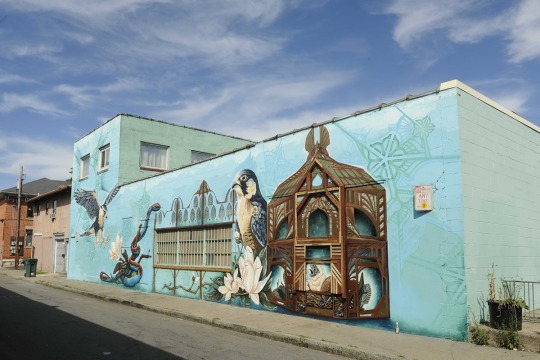
I recognize this wall. It’s downtown by the museum I used to travel to as a child. According to the website I found it on, the piece is titled “The Ones We Love” and was made by someone by the name of Sarah C. Rutherford.
1 note
·
View note
Photo
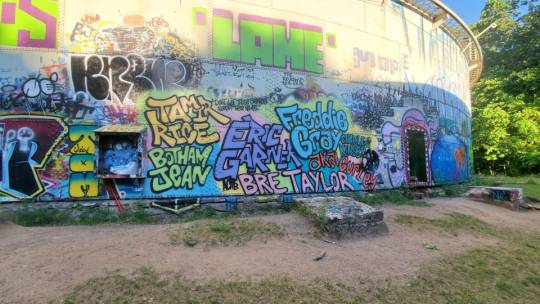
I found an image of some Rochester Graffiti near a spot I used to hang out with old friends downtown. I’ll share an additional image from Rochester that I recognize as soon as I can find one
0 notes
Text
An Analysis of Style Wars: Viewing Cultures rather than Art
When I think of Graffiti, I actually tend to lean towards imagining the artistic cultures of places like all of Detroit, downtown Rochester, and other Rust-Belt places. Style Wars was enlightening to me because it focused more on the culture of New York, and how that culture spawned and was cultivated by Graffiti Artists in and around the area.
If I was to bring more personal experience into the subject of graffiti, I would say that it’s pretty easy to see my connection with graffiti and the culture of the rust belt, being born in Rochester NY while my parents were both born and raised in the Detroit area. Though I lived a little outside of the city, it was pretty easy for me to see graffiti all the time, considering we had to travel into town any time we needed anything besides groceries. Similarly to Rochester, I noticed even more graffiti and street culture in Detroit, where there was little to no focus on enforcing the mild misdemeanors that related to vandalism and graffiti.
This brings me to the point of this post. In viewing the street culture of New York City rather than the acts of graffiti itself, it’s easier to see the struggle and relations between those who see graffiti as an art form and those who see graffiti as mindless acts of vandalism. Because places like Rochester and Detroit have less money flowing through them, I think graffiti and similar street art became much more mainstream much faster, whereas in New York City, the affluence of many people in the city prompted a much larger cultural pushback between those graffiti artists (and other street artists) and the people who saw street art as vandalism or unimportant to the culture of the city.
I think that a lot of people still have some discourse with graffiti and street artists. Being someone who was taught that graffiti was art and nothing more, watching style wars awakened me to the number of people that were initially against street art, which I think in the end contributed to the culture itself in the form of encouraging rebelliousness in peoples’ artworks.
0 notes
Photo
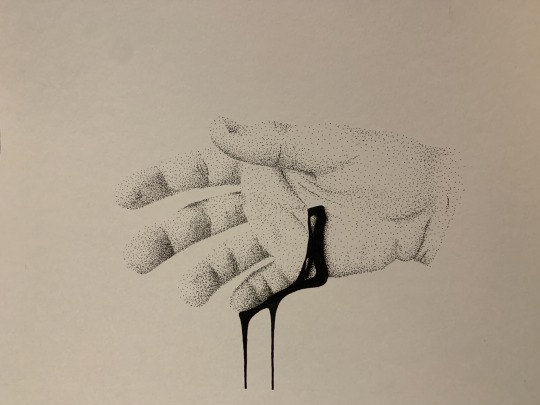
Here is one other example of the black sludge in my artwork. This one is a bit more religious than the last one, but even though the two photos I used the sludge in are very different, the sludge is symbolic of the exact same thing in each piece.
0 notes
Photo

Pertaining to my earlier post today, this is one of my earliest and favorite examples of the Black Sludge in my work.
0 notes
Text
Creating Unique Symbols in our Artwork
After watching Nicole Awai's Guest Speaker talk on Wednesday, I got to thinking about how we create unique symbols as artists in our own work. For Nicole, she talks a lot about "The Ooze", but what's interesting to me is that she talks about it in a way that treats it as a separate entity from her artwork. One line that stood out to me was "The ooze started appearing in my artwork." Almost like talking about The Ooze as though it's something beyond her control, or at least a conscious entity of its own.
What I didn't realize about this concept until hearing it however, is that this has happened to me in my own work. In fact, my "Ooze" is very similar to that of Nicole's. Starting over the past two years, I notices this drippy black sludge would appear in my artwork. At first it was more of the final touch to a work. Something I felt that needed to be added last second, but as it evolved, the sludge would become more and more a focus of my work, which is funny to me because I know exactly what the sludge represents even though I've never taken the time to think about it until just now.
This has taught me that creating unique symbols in my work does not always have to be (nor is it supposed to be) an organic process. Instead, it's a process that can evolve inside of you and your work before you even notice, turning into something that you never expected to see. Working from the subconscious like this is a huge part of my work so this discovery is very important to me
0 notes
Photo
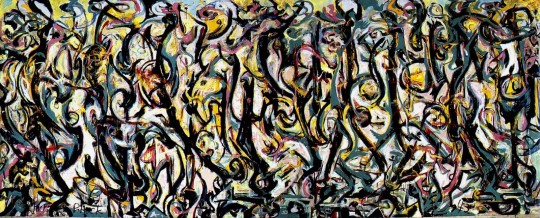
I found this Jackson Pollock work on another article describing Jackson Pollock’s contributions through the CIA during the Cold War (very similar to the one assigned for our class reading)
0 notes
Quote
In all the most well-regarded and rewarded trades and professions, especially broadcasting, the law and the arts, a full set of 1968 opinions is an asset and an aid to social advancement. Rejection of these opinions is a grave disadvantage.”
Peter Hitchens, The Broken Compass: How Left and Right Lost Their Meaning
0 notes
